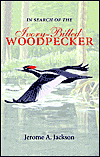
This morning after a brutal three hours of work on the dissertation, I headed off into the woods at work to try and recoup my sanity. I didn’t see anything too unusual--mostly because of the rather odd gentleman I ran into down near the creek. He appeared to be in his late 60s and had some kind of European accent. I was trying to pish up some sparrows when I noticed him sitting on the ground maybe thirty feet away.

At first I was a little startled. The only folks I usually see in the woods are hunters in blaze orange vests, but this guy was obviously not a hunter. I quickly noticed he had some old Leitz (remember those?) binoculars, so I figured he might be a birder and asked him if he'd seen anything good. He kind of looked at me funny and asked me what I meant--which immediately tipped me off to him not being a regular birder. I asked him if he'd seen anything out of the ordinary, and he replied that it was his first time on the property so he wasn't quite sure what was ordinary.
Anyway, I introduced myself and he told me his name was Sartre. "Like the philosopher?" I asked, to which he replied in the affirmative. I thought he was a little confused, because actually, when I said "like the philosopher?" what he really said was, "Yep, that's me."
Well, I really didn't think much of it because I noticed a couple of sparrows back in the brush, but then I noticed that this Sartre guy was kind of looking at me funny, so I felt like I had to make conversation with him. I muttered something about sparrows, and he started asking me about bird watching.
Now, I've only recently embraced the term "bird watching," it just wasn't cool to be a teenage bird watcher. Growing up, I had tried very hard to make a case for it being cool to be a birder. I was explaining this to him when he interrupted me--
"But you are watching the birds, aren't you?" he asked.
"Uh, I guess so," I replied. "Really I'm just trying to identify them, to see what they are."
"And what do you think the birds make of you watching them?" he asked.
Now, I thought this was getting a little weird, but whatever. Then he asked me if I'd ever felt like birds would "just happen" to take off as soon as I got them in the scope or binoculars. "Sure," I responded, "especially grebes."

Then he asked me if I wanted to know why they fly as soon as you look at them. I told him I thought it was just coincidence that the birds would fly when I looked at them, but then he did something that really kind of freaked me out. He said, "here's what you look like to a bird when you look at it..." He lifted his 7X35s to is eyes, and all of a sudden his eyes got HUGE! The binoculars magnified his eyes so all of a sudden it looked like he had giant monster eyes.
He took down his bins and said, "those birds are watching you, and when you look at them through the binoculars, they know that you have spotted them, you've captured them in the gaze, you've objectified them, put them at your visual mercy. It's like you've caught them, like the way you feel when you realize someone has been staring at you.

Birds don't like this, because usually they only experience this feeling when a predator has locked on them. When your eyes get huge through the bins, or you all of a sudden sprout a big giant eye in your spotting scope, it freaks them out and they fly away. You've caught them in the gaze."

Now, this was all very startling to realize. Birds may be watching us watch them, and our big, huge, magnified eyes might appear threatening to them. Yikes! Next time you are birding with someone, have them look at you with their binoculars or scope and you'll see what I mean. It's rather amazing.
Anyway, I kind of stood there puzzled for a minute, looking at my binoculars. I wanted to ask this guy more about this insight, but he was shuffling off towards the creek. He just said I could check it out in his book. "The Gaze," he said, "just remember the gaze."
Of course, this couldn't have been the real nobel prize-winning existentialist philosopher
Jean-Paul Sartre (he's
dead), but I have to tell you, this whole experience was kind of puzzling. Maybe even shocking. Maybe I've just been spending too much time writing my dissertation, or watching grackles at the feeder outside my window at work. Maybe none of this makes sense, but then again, maybe there's something to it. Maybe dead philosophers really do go birding in Southeastern Pennsylvania.
This afternoon I’ll go back out to the woods to see what’s around. I'll try not to "gaze" at the birds, but I'm still going to want look for those sparrows.
 When I first visited southeastern Pennsylvania in October 2004, one of the first things I noticed were the Wawa chain stores and gas stations. I had no idea what a Wawa was--but I did note the goose in the Wawa logo.
After I moved here a couple months later, I learned that Wawa is the Lenni Lenape Indian name for the Canada Goose (UPDATE: See note below).
I also quickly found that the Canada Goose is perhaps the most abundant winter bird in this area. Every day I see hundreds--if not tens of thousands--of these geese flying in formation, feeding in fields, or loafing on local lakes.
When I first visited southeastern Pennsylvania in October 2004, one of the first things I noticed were the Wawa chain stores and gas stations. I had no idea what a Wawa was--but I did note the goose in the Wawa logo.
After I moved here a couple months later, I learned that Wawa is the Lenni Lenape Indian name for the Canada Goose (UPDATE: See note below).
I also quickly found that the Canada Goose is perhaps the most abundant winter bird in this area. Every day I see hundreds--if not tens of thousands--of these geese flying in formation, feeding in fields, or loafing on local lakes.










